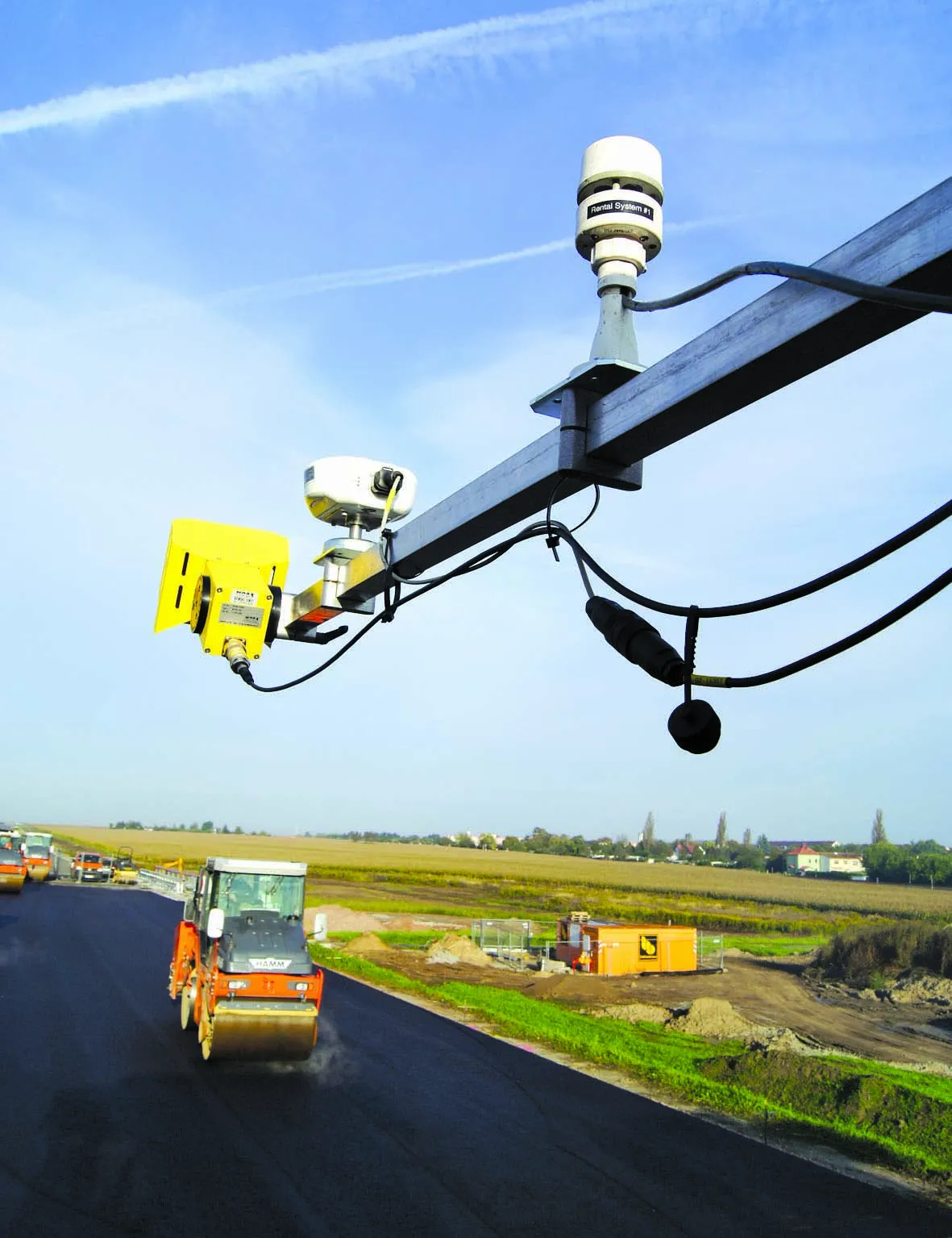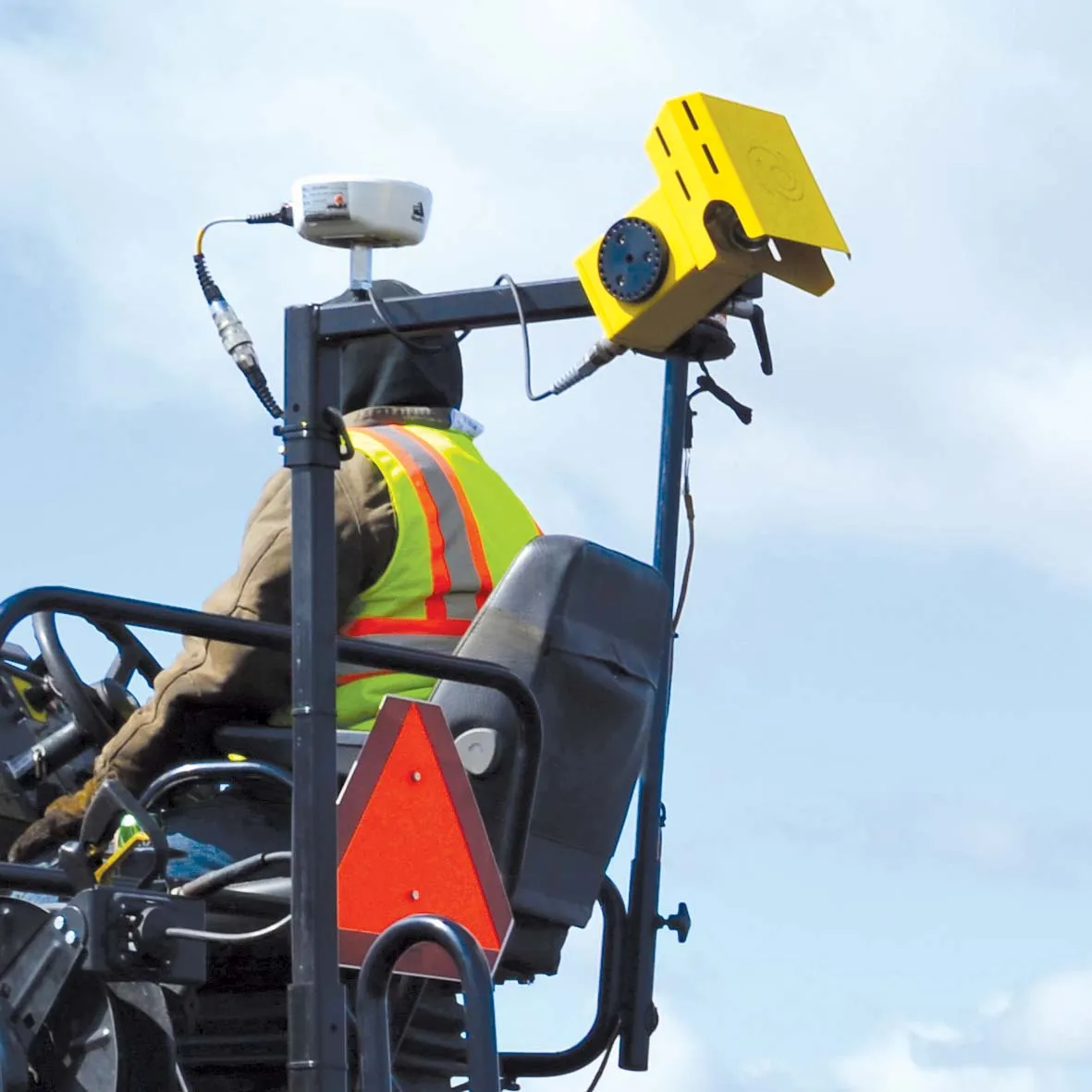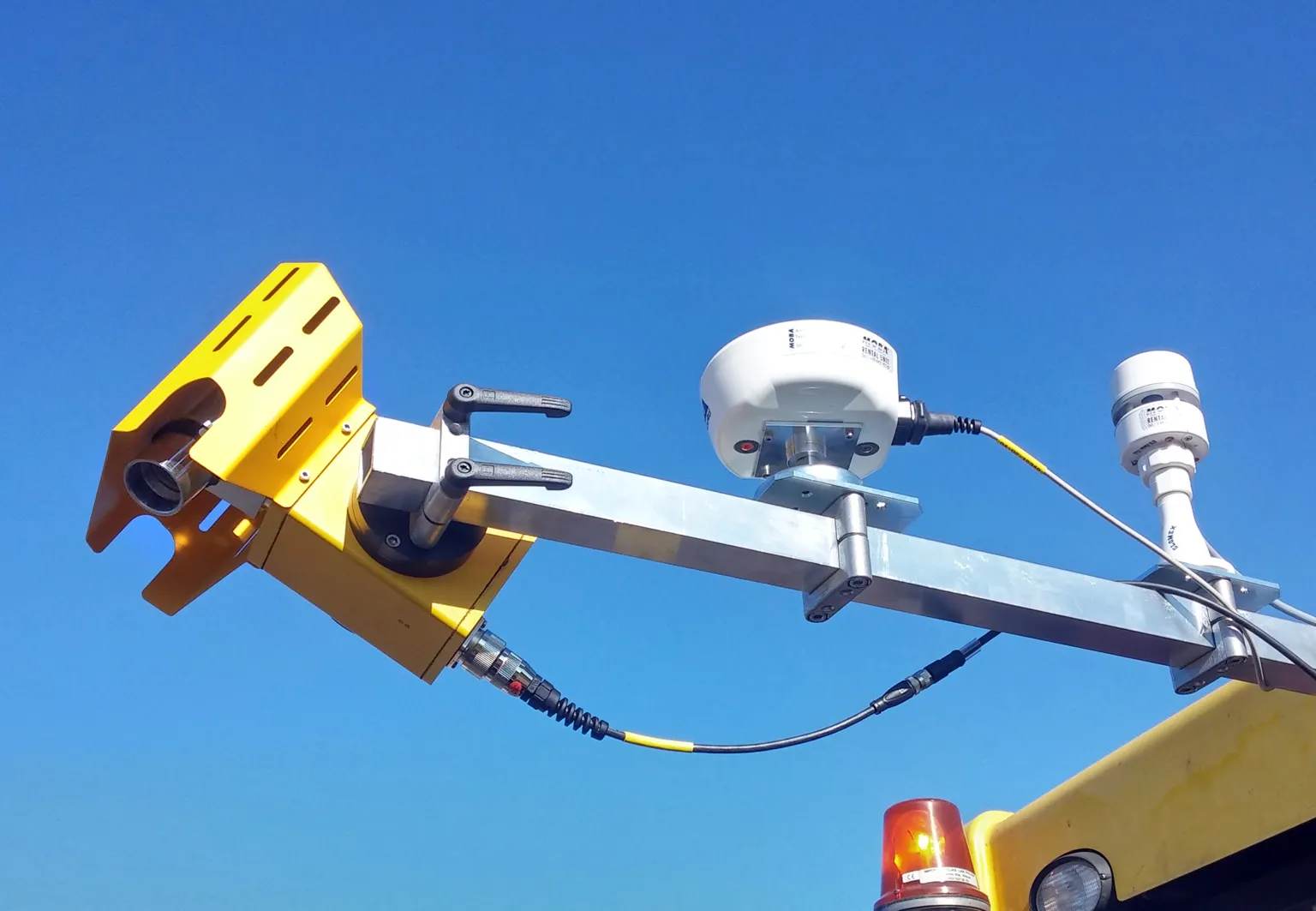The use of machine control technology on a bypass construction job has boosted quality quality control is a topic that clients as well as contractors are finding increasingly important. Control systems are being used more and more often on construction sites as a result, so as to collect data on a range of processes. This includes looking at the asphalt being supplied to site and on the quality of paving during construction. Using this data, processes can be optimised in the medium-term and, in the long-ter
April 27, 2015
Read time: 5 mins

The use of machine control technology on a bypass construction job has boosted quality
Quality control is a topic that clients as well as contractors are finding increasingly important. Control systems are being used more and more often on construction sites as a result, so as to collect data on a range of processes. This includes looking at the asphalt being supplied to site and on the quality of paving during construction. Using this data, processes can be optimised in the medium-term and, in the long-term, the longevity of the road surface can be increased as well. The PAVE-IR Scan package from German firm1228 MOBA is one system used for this task and records and documents the asphalt temperature over the entire area during paving.
The PAVE-IR Scan package was used during the new construction of the B6n bypass road, near Köthen and just to the north of the city of Leipzig in Germany. At the start of the work, even mounting the package on the pavers was a quick and simple task. The display is designed to be slotted easily into place in the cab while the the weather station and GPS antenna can also be mounted speedily as they are held in place with magnets. The equipment was mounted on both pavers for this operation, allowing the contractor to view the working area in real time.
The system was able to monitor the material even as it arrived at the paver. As the tipper trucks dumped their loads into the paver hoppers, the machines began working and the screed operators made adjustments to the width, while the infrared scanners of the PAVE-IR Scan equipment began to rotate.
With this movement, the scanner scans the temperature of the paved material at 61 measurement points across the entire paving width. And on this site after the paver had travelled the first few metres, a clearly recognisable colour profile then appeared on the display. This precisely plotted the surface temperatures of the asphalt during the paving process. The system also displayed and logged environmental information such as temperature, wind and the speed of the paver. Downtime was also logged while the system was able to monitor poor weather conditions.
This steady flow of data is important for the paving crew as it allows the team to adjust the process chain to account for the material temperature or the weather conditions. The package identifies areas where the material is nearing the lower temperature limit for optimum compaction for example, allowing the paving crew to prioritise this for immediate action. In addition, temperature data can be used for later analysis to optimise the entire process chain, from the mixing plant to compaction, and can considerably improve the road quality and its longevity. Over a width of 11.5m, the first asphalt paver was used to lay a flat surface over the lower asphalt layer, spreading 10,000tonnes of material on the binder layer that had been laid the previous day. "Over a length of 4m, the accuracy must be +/- 3mm. That's how it is in the specifications", explained Thorsten Schmidt from the paving team. The paver achieved this accuracy without problem using a floating screed to lay the new 40mm-thick layer on the asphalt laid the day before. "We paved the lower layers with levelling technology. As a result, the base is already very exact and no big irregularities are copied." The specifications for paving, including the use of a quality control system, are defined in the tender issued by the state construction authorities. These authorities also evaluate the data collected by the PAVE-IR Scan system during asphalt paving. "With this temperature data, it is possible, for example, to precisely determine whether the paver stopped because there was no more material. This would mean that the delivery chain was not well coordinated. Using this information, the process can be improved in the future," explained Marcus Watermann, MOBA product manager. The data is even more important, however, for documenting the temperature during asphalt paving over the entire area. "The regional authorities can use this data to see where the asphalt was not paved in the optimum temperature range or with large temperature differences," said Watermann.
Larger temperature differences during asphalt paving or the paving of material that is either too cold or too hot often leads to premature degradation, cracks or potholes in the asphalt. And the temperature data is helpful to the contractor as well, as this data provides proof that the material was homogeneously paved in the appropriate temperature spectrum, delivering the necessary high-quality result. The contractor can also use the MOBA PAVE-IR Scan data to optimise daily working.
For this job the data was recorded and the paving work carried out successfully. And with information now stored on the operation, any future issues can be addressed and identified all the more quickly.
Quality control is a topic that clients as well as contractors are finding increasingly important. Control systems are being used more and more often on construction sites as a result, so as to collect data on a range of processes. This includes looking at the asphalt being supplied to site and on the quality of paving during construction. Using this data, processes can be optimised in the medium-term and, in the long-term, the longevity of the road surface can be increased as well. The PAVE-IR Scan package from German firm
The PAVE-IR Scan package was used during the new construction of the B6n bypass road, near Köthen and just to the north of the city of Leipzig in Germany. At the start of the work, even mounting the package on the pavers was a quick and simple task. The display is designed to be slotted easily into place in the cab while the the weather station and GPS antenna can also be mounted speedily as they are held in place with magnets. The equipment was mounted on both pavers for this operation, allowing the contractor to view the working area in real time.
The system was able to monitor the material even as it arrived at the paver. As the tipper trucks dumped their loads into the paver hoppers, the machines began working and the screed operators made adjustments to the width, while the infrared scanners of the PAVE-IR Scan equipment began to rotate.
With this movement, the scanner scans the temperature of the paved material at 61 measurement points across the entire paving width. And on this site after the paver had travelled the first few metres, a clearly recognisable colour profile then appeared on the display. This precisely plotted the surface temperatures of the asphalt during the paving process. The system also displayed and logged environmental information such as temperature, wind and the speed of the paver. Downtime was also logged while the system was able to monitor poor weather conditions.
This steady flow of data is important for the paving crew as it allows the team to adjust the process chain to account for the material temperature or the weather conditions. The package identifies areas where the material is nearing the lower temperature limit for optimum compaction for example, allowing the paving crew to prioritise this for immediate action. In addition, temperature data can be used for later analysis to optimise the entire process chain, from the mixing plant to compaction, and can considerably improve the road quality and its longevity. Over a width of 11.5m, the first asphalt paver was used to lay a flat surface over the lower asphalt layer, spreading 10,000tonnes of material on the binder layer that had been laid the previous day. "Over a length of 4m, the accuracy must be +/- 3mm. That's how it is in the specifications", explained Thorsten Schmidt from the paving team. The paver achieved this accuracy without problem using a floating screed to lay the new 40mm-thick layer on the asphalt laid the day before. "We paved the lower layers with levelling technology. As a result, the base is already very exact and no big irregularities are copied." The specifications for paving, including the use of a quality control system, are defined in the tender issued by the state construction authorities. These authorities also evaluate the data collected by the PAVE-IR Scan system during asphalt paving. "With this temperature data, it is possible, for example, to precisely determine whether the paver stopped because there was no more material. This would mean that the delivery chain was not well coordinated. Using this information, the process can be improved in the future," explained Marcus Watermann, MOBA product manager. The data is even more important, however, for documenting the temperature during asphalt paving over the entire area. "The regional authorities can use this data to see where the asphalt was not paved in the optimum temperature range or with large temperature differences," said Watermann.
Larger temperature differences during asphalt paving or the paving of material that is either too cold or too hot often leads to premature degradation, cracks or potholes in the asphalt. And the temperature data is helpful to the contractor as well, as this data provides proof that the material was homogeneously paved in the appropriate temperature spectrum, delivering the necessary high-quality result. The contractor can also use the MOBA PAVE-IR Scan data to optimise daily working.
For this job the data was recorded and the paving work carried out successfully. And with information now stored on the operation, any future issues can be addressed and identified all the more quickly.







